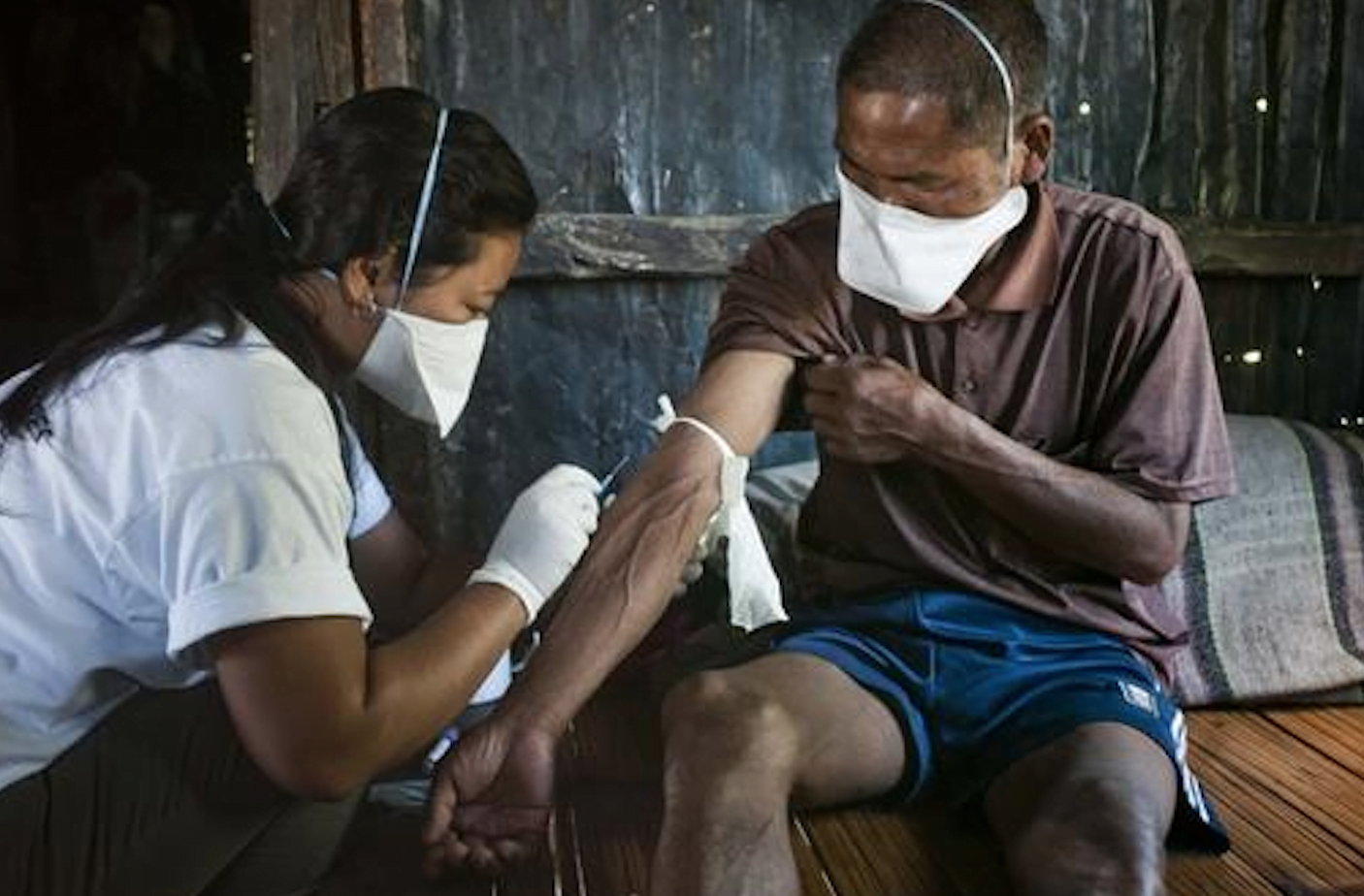The ongoing Ebola crisis continues to grab headlines ranging from celebrating the victories of a unified global response, to condemning the World Health Organization’s institutional ills during the crisis. There is, however, another deadlier disease that continues to be neglected by the global community: Tuberculosis. Despite knowing how to diagnose, treat, and prevent the disease, TB continues to kill 4,000 people a day and remains the world’s 2nd most prolific killer behind HIV/AIDS. Indeed, TB and HIV/AIDS often go hand-in-hand, delivering a fatal combination. Every day 1,000 people infected with HIV/AIDS die of TB.
While TB rates have fallen 1.5% every year for the past 25 years, Ambassador Eric Goosby, the UN Special Envoy for Tuberculosis, visited Washington, DC with the message that this is not enough. Goosby is a former top US health official who served as the Global AIDS Coordinator and led PEPfAR before moving to his new role at the United Nations.

“I would like people to get indignant of the fact that this is a disease we know how to diagnose, treat, and cure, but we cannot put a reliable medical system in place that reliably does it year after year [and] maintains the same attention and interaction with populations at risk,” he told journalists before a big White House Stakeholder Forum on the Development of the National Action Plan to Address Drug-Resistant Tuberculosis last week.
But while we may know the science, the challenge lies with developing and maintaining the institutions responsible for science delivery.
Reliable and consistent medical delivery systems are the key to effectively testing and treating populations most at risk of infection. The problem is that the countries most riddled with TB need sustainable financial and technical support that does not wax and wane with political interest. Indeed, some of the most impressive advances against the disease have sadly been accompanied by TB outbreaks, including a 14-year span when the infectious disease ran rampant through impoverished neighborhoods of New York City in the 1980s and into the late 1990s, where at times the prevalence rates rivaled, and even exceeded, rates in present-day Afghanistan, Haiti, and Sudan. When the outbreak struck New York City’s response was weakened given a decades-long systematic underfunding of its TB programs. In total the epidemic gave life to various strains of multi-drug resistant (MDR) TB and cost $1.2 billion to control, nearly 10 times the amount estimated for prevention. This is even a greater risk in countries heavily burdened by TB that not only lack the mechanisms for correcting funding gaps, but also the institutional memory for responding to such outbreaks.
In his new role with the UN, Ambassador Goosby will focus on three priorities for building public awareness of TB, namely testing, treatment and resistance. Ahead of the White House Forum in DC, Ambassador Goosby told reporters that the global community has a small window of opportunity to increase resources needed to build capacity for health care systems to test and treat the growing threat of TB and other accompanying infectious diseases through the development and application of integrated, universal health coverage. A lack of surveillance, diagnostic capability, and conduits for diagnosis alert and mobilization of response have manifested in a woeful estimated detection rate of 50% among people suffering from HIV-associated TB, and 45% of those estimated to be infected with multi-drug resistant TB (MDR-TB), strains unable to be treated by antibiotics.
Given the dangers and highly infectious nature of the disease, global complacency is no longer an option. Ambassador Goosby will look to galvanize international response and investment by leading reviews of some of the most heavily burdened TB health systems in the world including India, China, Pakistan, and Brazil. The reviews will focus on assessing TB responses and mapping medical capability and areas in need of strengthening. These assessments will then help to inform a broader strategy to build up health care systems and inform medical practitioner training in the fight against TB. This will include the development of monitoring and evaluation systems housed in respective country’s Ministries of Health, which will eventually be integrated and inform the World Health Organization’s global TB surveillance system.
The trick is getting the international community to commit to this vision. If they do, it may mean a profound improvement for the health and welfare of some of the poorest people on the planet who are most vulnerable to this preventable disease.
